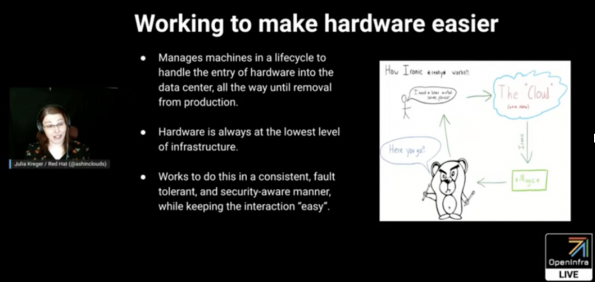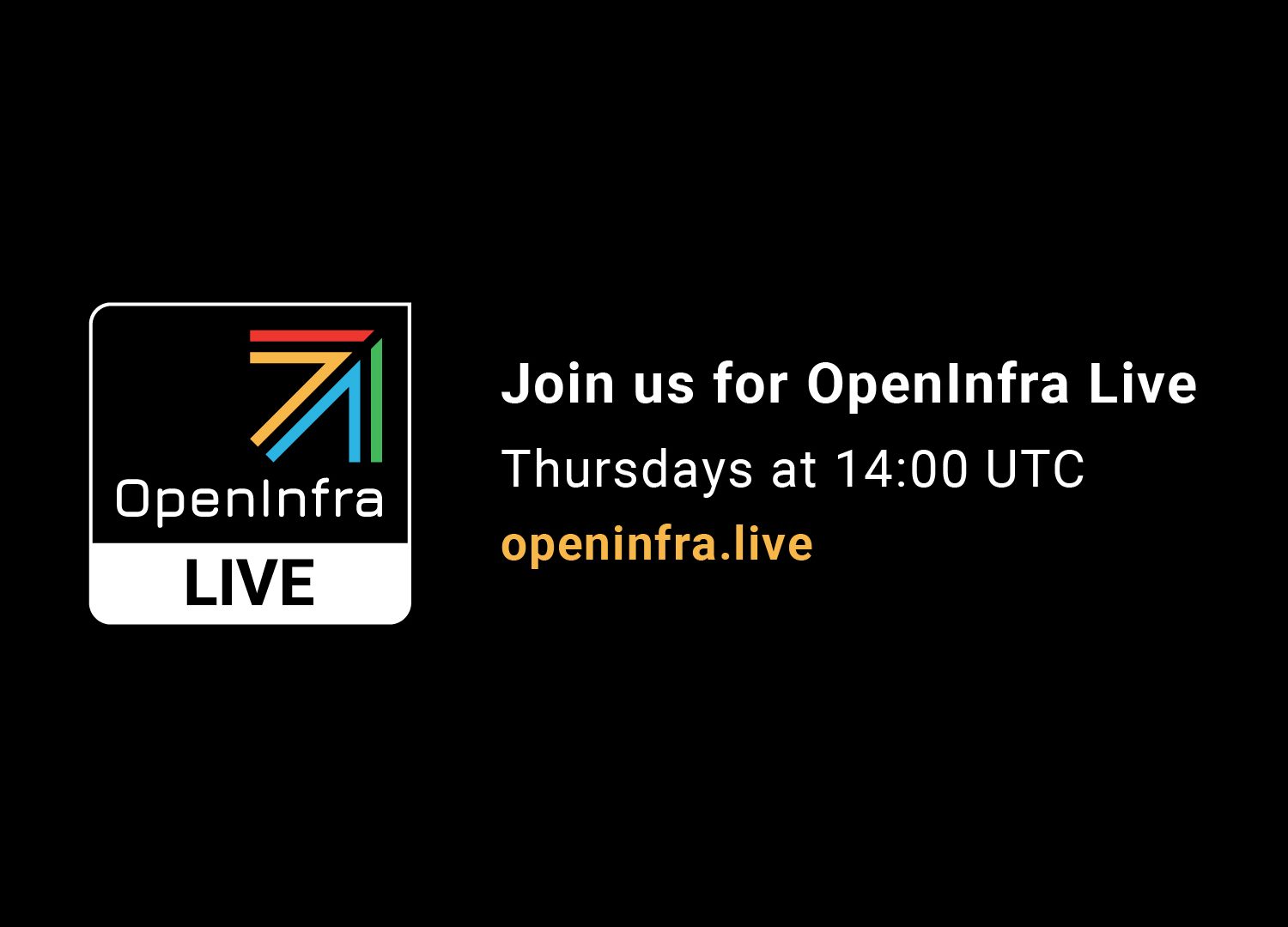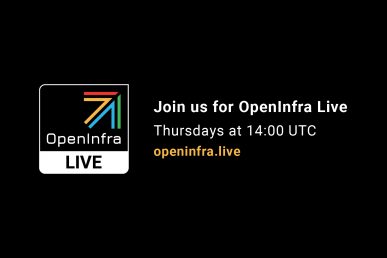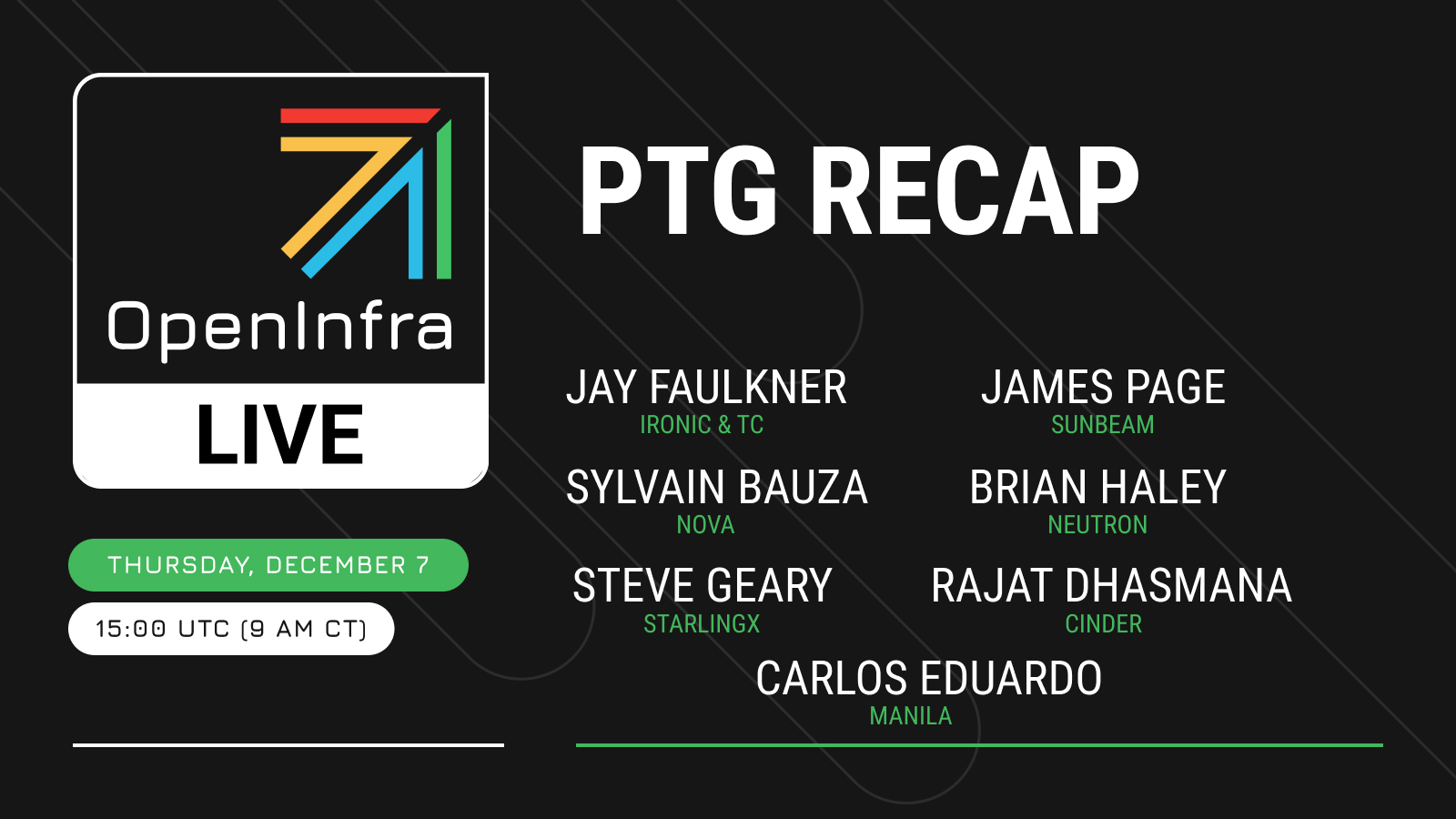OpenInfra Live is a weekly hour-long interactive show streaming to the OpenInfra YouTube channel every Thursday at 14:00 UTC (9:00 AM CT). Episodes feature more OpenInfra release updates, user stories, community meetings, and more open infrastructure stories.
Join us as members from the Bare Metal SIG join us to discuss how Ironic works to simplify many of the hardships physical bare metal operators deal with on a daily basis, including an overview of the project, project roadmap, and use cases of Ironic in production.
Enjoyed this week’s episode and want to hear more about OpenInfra Live? Let us know what other topics or conversations you want to hear from the OpenInfra community this year, and help us to program OpenInfra Live! If you are running OpenStack at scale or helping your customers overcome the challenges discussed in this episode, join the OpenInfra Foundation to help guide OpenStack software development and to support the global community.
Key Takeaways: Bare Metal: Ironic in Production
Ironic Overview
Julia Kreger, senior principal software engineer at Red Hat, kicked off the episode by introducing OpenStack Ironic. Ironic is an open source project that provides a framework to manage the lifecycle of bare metal machines. It allows users to securely re-deploy and re-use bare metal machines in an automated fashion, without a trip to the data center.
Kreger particularly appreciates this feature having experienced several 3am data center visits herself.

The recent OpenStack Wallaby release, available in April 2021, included a lot of Ironic enhancements:
- Redfish enhancements: Secure Boot enablement, Out of Band Inspection addition of network ports and Out of Band RAID management
- Multi-tenancy: new Role Based Access Control (RBAC) model supporting system and project access models
- NVMe secure erase support – a feature that Mohammed Naser, CEO at VEXXHOST said was super useful for his team.
- Deployment interface enhancements: Anaconda support, Ramdisk booting of arbitrary ISO images
- API users are now able to specify the explicit “deploy steps” used for a deployment
- Additional performance improvements
Features under development for upcoming releases include:
- Substantial node list performance improvements, backported as bug fixes to Wallaby
- BIOS setting registry support
- First class for support for boot mode and secure_boot
- Node error history events via the API
- Support for Attestation and Keylime attestation
Learn more about OpenStack Ironic
Find out more about OpenStack Ironic including documentation, a bare metal whitepaper and how you can get involved in the upstream community. If you are using, testing, or evaluating OpenStack Ironic, please share your feedback in the OpenStack User Survey.
OpenStack Ironic in Production
NVIDIA
Chris Krelle, OpenStack engineer from NVIDIA and wearer of the official t-shirt from the Ironic community, talked about how the team at NVIDIA is using OpenStack including Ironic quite heavily in their test environments and proving grounds for hardware.
“Our main focus is to be able to provide environments for our developers and engineers to be able to test their device on multiple pieces of hardware and multiple operating systems,” Krelle said. “One of our users will lease a machine and cycle through four or five operating systems in a day testing it.”
StackHPC
Mark Goddard, HPC cloud engineer at StackHPC, talked about the two use cases for Ironic at StackHPC.
The first use case is based around Kayobe, the tool used by StackHPC to deploy OpenStack clouds.
“The seed host is a machine we set up that runs bifrost that runs Ironic in a standalone environment. It provides everything they need to provision the control plane, hypervisor and storage nodes. Ironic provides the provisioning layer for their clouds.
The second use case is for providing bare metal compute to users. Typically, the team would do that using a second instance of Ironic, not the bifrost running on the seed node.
“We would have an Ironic service running on the control plane, so it’s generally multi-node, highly available and integrated with OpenStack services including Nova that give it a more cloud-like and user-friendly interface.”
VEXXHOST
Naser talked about how the VEXXHOST public cloud is running in three regions on OpenStack.
“One of the main things we are doing a lot of work and driving towards is offering bare metal in [the VEXXHOST public cloud], so we have been pushing some of the limits of Ironic while we have been doing that using features like link bonding, software RAID, multiple RAID partitions, and UEFI boot,” said Naser. “We want to have a very standardized platform in order to deliver bare metal systems on the cloud, as if it’s another virtual machine (VM) purely via Nova and provided in a way that gives the customer full redundancy across everything.”
The team at VEXXHOST also manages Ironic for some private cloud deployments. Their customers use it for workloads that require physical hardware to do things like running VMs to test software.
In addition to the users on the episode, Sean O’Haver, systems engineer at Blizzard Entertainment, chimed in on LinkedIn to share how his team is using Ironic in production.

Live Q&A
- What is the auto-traiting function?
- How should people interact with the community?
- What’s the “hello world” of Ironic?
- How do you handle the process of recycling hardware?
- What’s the best way to integrate your pre-existing hardware?
- How does Ironic enable container environments?
- How do you run multi-tenant networks in these bare metal environments?
- What’s the best driver to start learning?
Next Episode on #OpenInfraLive
For the uninitiated, OpenStack’s role in cloud infrastructure can be a little hard to understand unless you know it’s capabilities and how it operates. Furthermore if someone is new to infrastructure-as-a-service, OpenStack looks a lot like virtualization or simply like public cloud offerings. In this session we will start at the very beginning and walk our way through early services.
Tune in on Thursday, August 19 at 1400 UTC (9:00 AM CT) to watch this #OpenInfraLive episode: OpenStack Basics.
You can watch this episode live on YouTube, LinkedIn and Facebook. The recording of OpenInfra Live will be posted on OpenStack WeChat after each livestream!
Like the show? Join the community!
Catch up on the previous OpenInfra Live episodes on the OpenInfra Foundation YouTube channel, and subscribe for the Foundation email communication to hear more OpenInfra updates!
- Revolution in Cloud Economy: How FishOS – Integrated Solution Reduced Enterprise’s Cloud Costs by 50% - July 1, 2024
- Inside Open Infrastructure: June 2024 - June 18, 2024
- 2024 Superuser Awards Nominations Now Open - June 9, 2024

)









